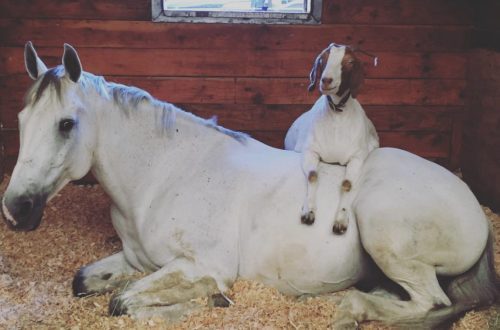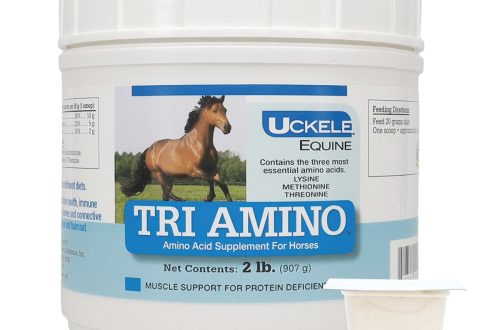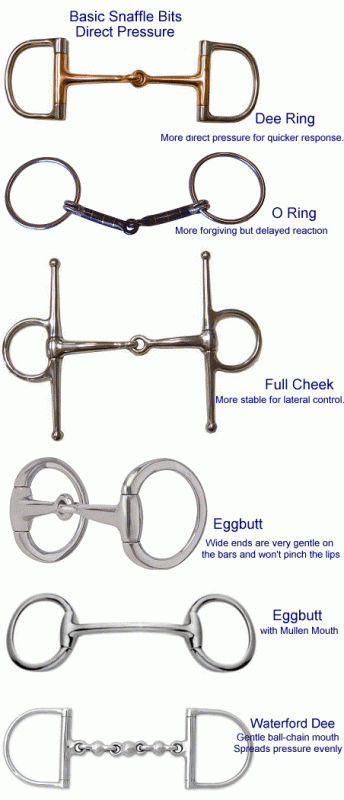
Snaffles are so different. What and for what?
Snaffles are so different. What and for what?
Simple snaffle with one joint.
The horse reaches for the fixed outer part of the bit. The internal movable part encourages it to bend on the inside.
A simple snaffle has joints – its two parts are connected in the center of the bit. This allows the rider to move one part of the bit while leaving the other part stationary. The movement of the inside of the bit encourages the horse to bend inward at the poll. The external fixed part of the gnaw gives it a support on which it stretches.
This is the easiest snaffle. Most horses start with him and stay with him forever. However, it is not as soft as it seems. And with such a snaffle, you can injure the horse, rude with your hands. It can set the stage for resistance that lower-level horses will carry through their entire riding career.
The joint rests on the sky.
If both reins are pulled hard, the snaffle will fold around the lower jaw, acting like a nutcracker. It can also take a V-shape – the angle of the V rises higher and rests against the soft palate of the horse. The toothless edge of the mouth of the lower jaw is sensitive, but the palate is much more sensitive! And his tongue cannot protect him. At the same time, the more vertical (or outside the vertical) position the horse’s head takes, the more V rests against the sky.
There is no “extra” space in the horse’s mouth, just like ours. Focus on your mouth. Is there space/air between your tongue and the palate?
The snaffle in the horse’s mouth should lie on the tongue, but not press hard on it, just like on the palate. This is possible only if the bit is very thin and the contact is very light without changing the shape of the bit into a V-shape. Horses that are pulled on the reins and that are driven with a long single-jointed snaffle often have a black spot on the palate. This not normal…

Snaffle with two joints.
This snaffle has three parts, which turns the V-shaped bend into a U-shaped, a little more anatomical. The parts can still move independently of each other, so this snaffle works the same as a single jointed snaffle, however…
Vertical rings make the action of the snaffle rougher, horizontal rings soften it.
In some double-jointed snaffles, the side parts are connected through vertical rings (with the middle part having horizontal holes). In this case, the arch still causes horses painful sensations. Some snaffles have horizontal rings on the sides. They better match the U-shaped mouth of the horse, the lines of the bite are smoother. This is good, especially when combined with soft contact, but does not negate more pressure on the edentulous edge of the mouth than on the tongue.

Snaffle with a link – “olive”.
The middle link of these double-jointed snaffles is shaped like an olive. I have not worked with such a snaffle, so I can not say anything about it, except that it takes up more space in the horse’s mouth.

Snaffle with a link – “eight”.
The French figure eight is another type of middle link snaffle with a double joint. This link is an oblong or 8-shaped piece that can be quite thin. The thinness of the link is usually not a problem as it lies flat on the tongue. If this is not the case, then this is not the French eight, but Bristol (see below). The middle part is usually longer than the “olive”. She occupies the language bоlarger area and lies flatter.

Snaffle with arch link.
There are snaffles, in which the middle link is made in the form of an arch for the tongue. If the horse is more comfortable with this snaffle than with the olive and the French figure eight, then that’s good.

Snaffle with ball link.
Snaffles, the middle links of which are made in the form of a ball, are not very common. The ball should direct pressure to the middle of the tongue. This link is stricter than an olive.
Snaffle with curved mouth.
You can use a single joint snaffle with both sides curved. When you tighten the rein, the bit will not form a sharp angle and will somehow conform to the shape of the horse’s mouth. If I were to test a snaffle on my horse, I would first choose a 3-joint snaffle with curved parts (the horse’s mouth is easier to protect if the bit has XNUMX parts). In addition, the presence of two sides of the bit and one middle link contributes to the fact that when one side of the snaffle is moved, the opposite side remains more stable. This is important when working with one occasion.
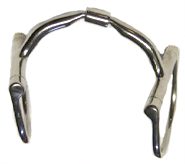
Miller’s snaffle.
The fixed side of the snaffle remains stationary while the opposite side is moving. The bit on this snaffle is too thin and I have heard from many riders that this snaffle is not comfortable for horses. Why? Perhaps due to hard hands or the use of additional devices. I guess this snaffle is just very thin for contact work, which is needed for dressage. It might be a good fit for Western Pleasure.

Straight snaffle.
Horses with a particularly sensitive edentulous mouth edge can work on a straight or curved snaffle (Mullen) that has no articulation (but some horses find this pressure on the tongue annoying). The straight snaffle should not be used unilaterally. If you pick up the left rein to get the ruling, the right side of the snaffle will release the pressure.
A straight snaffle presses on the upper gums.
Unfortunately, the straight bar does not match the anatomy of the mouth, and the horse has nothing to protect his palate. All she can do is push hard against the snaffle or open her mouth. There is not always such an extreme impact as in the animations above, but the tongue presses the snaffle against the lower corners of the sky anyway.

Flexible rubber snaffle.
You can bypass the action of a straight snaffle by using a flexible rubber snaffle without joints (you can’t participate in competitions with it!). It looks like a piece of hose, is flexible enough, and does not fold into a V-shape. Another option is a double-jointed snaffle with rubber band wrapped around the sides to control stiffness. This can be useful for horses who hate anything that rings in their mouth (any articulated snaffle will).
Correction training snaffle Sprenger.
Here, the bite goes around the tongue, but it is motionless, since it has no articulations. I’ve never tried this snaffle and don’t see any advantage in it other than the fact that I can go to competitions with it, but not with a straight rubber one.

Waterford snaffle chain.
This snaffle is made up of 5-9 linked pieces that act like a chain in the mouth. I think it’s a blessing for riders who are used to sawing the horse’s mouth: it moves back and forth easily and causes a lot of discomfort that makes the horse give in. This knotted, uneven snaffle has so many articulations that it can easily wrap around the horse’s lower jaw but keep it from stretching forward. It is definitely not for dressage.
Bristol snaffle (the flat middle part is deployed perpendicular to the tongue).
The middle link of this snaffle, similar to the French figure eight, lies on the tongue not with the flat side, but perpendicularly. It gives a lot of pain to most horses, but many riders use it, mistaking it for a “figure of eight” …

Magennis snaffle with rollers built into bit parts.
He is also too strict for most horses. The bite has sharp edges and moving parts. Why does it have these videos? And all this moves in the mouth …

Snaffle for tongue correction.
The idea behind the snaffle is to have the “shovel” press down on the tongue and push it deeper into the mouth so that the horse can’t pull it out and throw it over the snaffle. You can retrain the horse by lowering the snaffle lower (which is more convenient) – this will not give him the opportunity to change his tongue. But in heavy hands, this snaffle is just as bad as a tongue or a pelyam – it overcomes any justified resistance and protests of the horse.

Twisted snaffle with a small number of revolutions.
Its very name is associated with a tool for torture – you twist, and the victim screams. Do a simple test: put the snaffle on your wrist and pull the rings with your other hand. Unpleasant? This is how a twisted snaffle works …
Double snaffle.
Double snaffle Pessoa.
And here is the double snaffle. It has two gnaws, articulated so that their joints point in different directions. If you pull on the reins, the bits will take on the shape of a W. Such a snaffle takes up more space in the mouth, and the horse cannot protect the palate from strong pressure from both sides. Such snaffles have many extreme variations. Why not just put a blade in the horse’s mouth?
Trenzel Watreford Pessoa.
This snaffle is similar in effect to the previous one, but in principle it does not perform the functions of a snaffle – there is nothing with which the toothless edge of the mouth could come into contact, – only the chain gnawed Watreford. This adds the function of Gag Pessoa, who pulls the chain over the horse’s tender mouth. The only thing that can be taught to a horse with such a snaffle is to instantly stop due to pain.
Bit thickness
Thicker snaffles are considered softer than thinner ones. A thicker snaffle has a wider contact surface than a thin snaffle, therefore, it distributes pressure better. But a thicker snaffle takes up more space in the horse’s mouth, puts more passive pressure on the tongue and palate, and opens the lips more. Passively, it can be more uncomfortable.
Also, a thicker snaffle may be “too soft”. There is such a thing as being too comfortable, which can lead to the horse not “respecting” the snaffle, taking the opportunity to lean on it or go through it. This, in turn, will affect the “weighting” of the rider’s arm, which must withstand the strength of the horse’s jaw joint. In this case, the horse may eventually develop an inflammatory process caused by constant pulling on the reins. Because of this, the horse will not be able to quickly relax the jaw until the endorphins caused by the work dull the pain.
Lever snaffle, or Gag
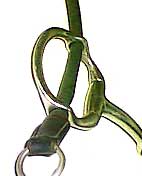
English sliding gag. The snaffle rings have two opposite holes through which the cord passes.
The snaffle we usually call “gag” is usually the English gag. From the outside, it may seem like an ordinary snaffle. You attach the reins to it like you would to a regular snaffle, but the cheek straps of the bridle do not attach directly to the rings of the snaffle. The cheek strap is made in the form of a cord that passes through two holes in the rings and is fastened to the rein. Basically it should be a snaffle with two pairs of reins, but I haven’t seen it used that way.
Regular sliding gag.
This gag is sold with synthetic cord cheek straps. The buckles cannot go through the hole, so you would not be able to thread the cord into the snaffle ring yourself.
The cord (blue) goes through the hole in the snaffle ring. When you pull on the rein, the line is pulled towards the rider (pink). In this case, the buccal part is shortened (you “drag” it down), and the snaffle is pressed against the teeth (green).
This gag is intended to be used on pulling or hard-nosed horses evading controls by snaffling. It is mainly worn on show jumping or triathlon horses. This snaffle has no positive effects when training a dressage horse.
Dutch / Pessoa / Continental / Three (four) gag rings

Gag Pessoa with 3 rings (Olympic snaffle).
The most common of the gags has always been the snaffle bit, which is usually called the reining snaffle bit. Many dressage athletes used it in home training because it helped control hot horses and put naughty horses on the reins. People usually talk about the “lever action” of this gag and that it is softer than the pelam and the mouthpiece.
What this snaffle actually creates is a leverage action that pulls it towards the teeth and forces the rider to hang on to the bit, trapping the horse so that he is now fully focused on his teeth.
Yes, there is leverage, since the cheek strap is attached to an additional ring located on the main snaffle ring, and the rein is attached to another additional ring located opposite the first additional ring.
The mouth sits somewhere in between and is more or less stable in the horse’s mouth. Any tension on the rein will move the cheek strap ring forward along the circular path of the main snaffle ring. This is a common function of any lever snaffle, although this gag does have an articulated bit. The fact that he doesn’t have a chin chain is a disadvantage in my opinion, because when the reins are pulled back and up, the cheek strap is pulled forward and down. But, since the axial point prevents the cheek strap from dropping down, the bit moves up, into the corner of the mouth, towards the teeth. The snaffle ring is twisted in the bit (the same action is performed by the cheek cord in the sliding gag). This would never have happened if the ring to which the cheek strap is attached was fixed with a chin chain. This would prevent the cheek strap from pulling down and the mouthpiece from going up to the teeth. Also, the effect would be much more serious if the bit pressed down on the tongue and the toothless edge of the mouth, and the lower jaw was sandwiched between the chain and the bit.
Since there is no chain, this gag will not have the desired effect on a naughty and pushing horse. All parts of the snaffle and bridle have some clearance. The rider can actually move the arm (backward) 10-15 cm before a truly tenacious horse feels pain. The rider will actually place their hands on their hips and bring their elbows out of the body, which is not a natural and comfortable position.
First, the cheek strap will move forward 2,5 cm (with the snaffle going up), which corresponds to 5 cm of movement of the rider’s hand. The bit then curves around the jaw (it has an articulation that makes it more horizontal and gives the rider an extra 5cm). The horse will then begin to open its mouth until it is prevented by the noseband and then give up in the neck. This will allow the rider to pull the arms back 10-20 cm, slowly increasing the horse’s discomfort. If you are so move your hands from their initial position above the withers, they will be on your hips. Your elbows will go back and the line from the elbow to the horse’s mouth will be broken. From this position, you are unlikely to be able to give – you will only pull.
Miler dressage gag
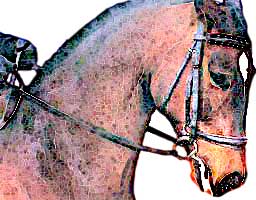
Part of the western iron has come into dressage, perhaps because the more inferior a horse is in the neck, the better it is for dressage, and western sport has a ton of tools to get that out of a horse.
Miler snaffles have occupied a large segment in the dressage ammunition market. Many riders use them and complain that they are banned from competition. What they don’t know is that the small holes in the rings of this snaffle make it the Kimberwick Articulated Snaffle, the English jumping iron, on par with pelyami and other hand brakes.

Geg dlya vijdzki….?
My guess is that riders who use devices they don’t know how to work just to “fix the problem” without understanding the cause of the problem are not ready for dressage competition yet.
American gag.
Many of these western snaffles look like something new and fast acting. But no matter what you call them, a gag remains a gag. If it is not secured with a chain, it pulls the bit up towards the teeth, especially if the bit attachment works the same way as on the American gag. A couple of centimeters, which gnawed slides along the mount when you pull on the rein, causes the lever to rotate horizontally, the cheek strap mounts move forward, and the bit pulls up towards the teeth. And speaking of teeth…
Placement of the bite in the mouth
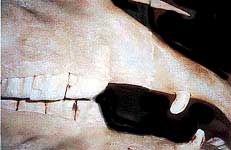
The so-called “snaffle place”.
I recently read an article about equestrian dentistry and how it can benefit a riding horse. The article was called “Place for the snaffle.” It explained how to grind down the first molars to make room for the snaffle. Have both dentists and riders decided to forget about the proper functioning of the snaffle in the mouth when the horse is on the bit?
Proper placement of the bite in the mouth.
The snaffle shouldn’t make contact with the molars in principle, because if it does, it means the horse’s head angle is wrong, the length of the cheek straps is wrong, or the rider is pulling on the reins of the gag or similar snaffle with too much force!
With normal head contact and position, the bit never touches the molars. It should be at least 2,5 cm away from them. In this case, the number of folds in the corners of the mouth during contact riding and during inactivity will be the same. Only strong contact will cause the snaffle to rise and touch the teeth. This will also lead to the fact that the cheek straps will begin to loosen and move away from the cheeks to the sides.
I’m not saying that horses don’t need dentistry. If the problem persists when you have checked the bit for adequacy and are running 100% on soft contact, then this is a signal to check the horse’s mouth. But solve the problem, don’t hide it behind a “snaffle spot”!
Undesirable effects from using a snaffle
Disharmony caused by the wrong snaffle.
Many horses have mouth problems related to the way the rider controls the horse. The problem of having a snaffle in your mouth is just as acute as the problems of having a rider on your back. Just as a horse’s back is not designed to carry a rider in the saddle, its mouth is not designed to contain iron.
The horse’s spine supports the weight of all its internal organs, and the muscles used to do so are the same muscles used to carry the weight of the rider. In nature, nothing ever pulls a horse’s jaw back. Nothing presses on her tongue and does not restrict the movement of the neck. Therefore, the presence of a snaffle has no less effect on the horse than the weight of the rider. But the main thing is how the reins are used. It is they that affect the pressure of the snaffle on the tongue, its position in the mouth and its movements. The snaffle is not inherently “bad”, it’s the way the rider uses it that makes it “bad”. Everyone knows the common expression that a snaffle or mouthpiece in the hands of an unskilled rider is like a grenade in the paws of a monkey. But when I say “unskilled” I don’t just mean beginner riders, but all those who don’t understand what actually means “in rein and in balance”.
As with everything else in riding, the snaffle can be used incorrectly for two reasons – due to lack of training and due to a deliberate desire to force something out of a resisting horse. You can hang from the horse’s teeth, balancing yourself, holding on to the reins like a handrail. Some riders simply can’t balance themselves properly and find it painful to admit it. And this awareness becomes the first step towards doing something – already good!
The saddest thing is when the rider can balance himself without the help of the reins, but uses the body as a counterweight to lift the horse’s neck with the reins and get these “circus” high movements, do something that causes pain, distorts the balance and gaits …
Ignorance and premeditation are also present in the choice of snaffle. Many riders choose a single joint snaffle that is too thick and too wide for the particular horse. And all because they heard that this is the “softest” iron. They don’t think the snaffle is “too thick” or “too wide” because they think it fits well in the horse’s mouth (otherwise they wouldn’t buy it). They believe in his “softness” because they learned about it from somewhere. No, if I were a horse under the saddle of an inexperienced rider, I would prefer to work on a thick snaffle rather than on a thin one. Let the snaffle be wide so that the round rings do not pinch my lips.
A snaffle that is too wide does not fit the horse.
But let’s forget about the “lesser of two evils”, because the lesser is still evil. Look how many horses are around, running with their mouths open, crossing their jaws, which are then corrected with a self-tightening capsule or a capsule with “snot”! A thick gnaw presses down on the tongue, and the tongue in response presses up on it, lifting it up to the soft palate. The thick bit opens the horse’s lips, the horse tries to chew, but swallows air. The single articulation creates an inverted V-angle in the mouth, the sharp edge of which injures the palate as soon as the rein is taut. And, since the two joints are too long, the effect of the nut cracker is increased – the jaw is compressed even more. The horse’s lips are also pulled under the noseband, causing injury.
The horse gets used to the discomfort in the mouth, becoming insensitive, and the rider has to pull even harder on the reins. The horse becomes even more insensitive and tight-lipped. Heavy contact and strict controls put a lot of pressure on the lower jaw. The jaw joint is tense and painful, not to mention the appearance of muscle tension and cramps.
The solution to the problem is to remove the snaffle for a while to restore the jaw. Use a hackamora, side pull, cavesson, bridleless bridle, perhaps take a break from training. Then find a narrower snaffle that matches the shape of the mouth, with two joints and oval rings. The snaffle should not stick out of the mouth too much. The bite should protrude slightly. Insert the snaffle into the horse’s mouth so that there are no wrinkles at the corners of the lips. Then use a strapped rein. And no gloves. If your hands hurt, you will know that the horse’s mouth hurts too.
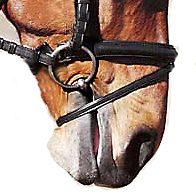
The snaffle is located very high, the skin in the folds can be irritated and injured.
In passive work, hold the reins without pulling – let your fingers feel comfortable. Teach your horse to respond to the controls by releasing pressure as a reward. Do not hold the horse’s head and neck in the desired position with the reins if the horse cannot hold his neck and raise it without his participation. She needs to be allowed to keep her neck down.
Well fitted and fitted snaffle, folds are normal.
Riders often place the snaffle high in their mouth, next to their teeth, and this helps the horse push even harder into it. The teeth are not sensitive to pressure. Sometimes this is good, especially if an inept rider rides with his hands working. So the horse can avoid some pain. If this rider simply lowers the snaffle down 2 holes, the horse will try to move his tongue over the bit to avoid pain. This is a saying to the fairy tale that a snaffle set too low will teach the horse to flip the tongue. This is not true. This is what the horse teaches.hard reason.
This is where dressage riders need to look at Western Pleasure riders. Although some of them are overzealous and ride horses with no contact at all with their head down very low, most of them are aware of how to get the horse to relax, stretch and become lighter. And they put the snaffle very low in the mouth, in the middle of the toothless edge. There are no wrinkles at the corners of the lips. There are no wounds and chafing – pleasure.
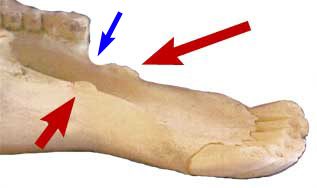
Growths on the edentulous edge of the mouth resulting from exposure to a snaffle.
Studies of the bodies of horses by scientists in the UK have shown that the percentage of horses that have developed growths on the edentulous edges of the mouth turned out to be significant. Growths similar to those seen on the joints of horses suffering from arthritis have also been found on the lower jaw. Imagine the pain these horses felt when the snaffle pressed against their jaws?
Methods for attaching the bit to the end of the snaffle
There are many ways to attach the bit to the snaffle ring. Some have virtually no functional differences, while others change the function of the snaffle. Some are better for sensitive or younger horses. Consider these methods, moving from simple to more complex.
Snaffle with simple rings.
This is a simple snaffle with a simple ring. You can work with it with most horses. One of its disadvantages is that the ring slides freely through the hole in the bit and can easily pinch the horse’s lip. Another is that there is a gap between the ring and the hole in the bit, and such a snaffle will make a tinkle. I personally knew a mare who hated anything that made sounds in her mouth. And to solve this problem, we move on…
Snaffle with oval rings.
The rings of this snaffle are connected to the bit by means of a tunnel located at the ends of the bit. The ring thins as it passes through the tunnel, the gnaw is rounded at the junction. Such a snaffle does not rattle and does not catch lips.
Snaffle with D-rings.
This snaffle is an improved version of the previous one. The longer connection of the ring and the bit lies on the muzzle of the horse. The flat parts pull the head of a young horse that likes to lean on the snaffle or is difficult to handle towards the controls, like an anchor or hook. This is the traditional snaffle for beginner racehorses. It works better than a snaffle with round rings, which can be pulled into the horse’s mouth by pulling the rein on one side.
Snaffle with antennae – full check.
Loops for snaffle with antennae.
The best snaffle that can help with this problem is the full check snaffle. However, there is always the danger of this snaffle getting stuck in the bridle. To prevent this from happening, small leather loops are used, attached to the cheek straps on one side and to the antennae on the other. It also helps keep the snaffle in your mouth so it won’t roll around as much. This snaffle may seem complicated, but it’s not. In fact, this is the most reliable snaffle for a young horse.
Drop ring snaffle, or Boche/Phyllis snaffle.
The snaffle with drop-shaped rings (Boche/Phyllis snaffle) performs the same functions. It may look deceptively like a gag, but it is not a gag, as the bit cannot slide over the ring, which is a must for a gag. The cheek straps attach to this snaffle above the main ring. It also helps keep the snaffle from being pulled into the horse’s mouth. Horses generally accept this snaffle well.
Incorrectly deployed Bosch/Phyllis snaffle.
This snaffle is mistakenly considered to create pressure on the back of the head. However, in order for it to exert pressure on the back of the head, the ring to which the rein is attached must have an elongated oblong shape, such that the rein remains at one point on the ring. If the ring is oblong, the rein will remain at one point and thus pull that part of the ring towards the arms. If the ring is round it will slide in the bit hole and the rein will also slide over the ring.
Snaffle with V-shaped rings (Sprenger).
It is sometimes erroneously depicted as upside down, called a “drop check”. This use case is possible, but then the snaffle turns into a strange-looking pelyam with an articulated bit that does not have leverage. Just a spinning rod. Of course, it is not intended for such use …
Teresa Sandin (a source); translation by Valeria Smirnova.




